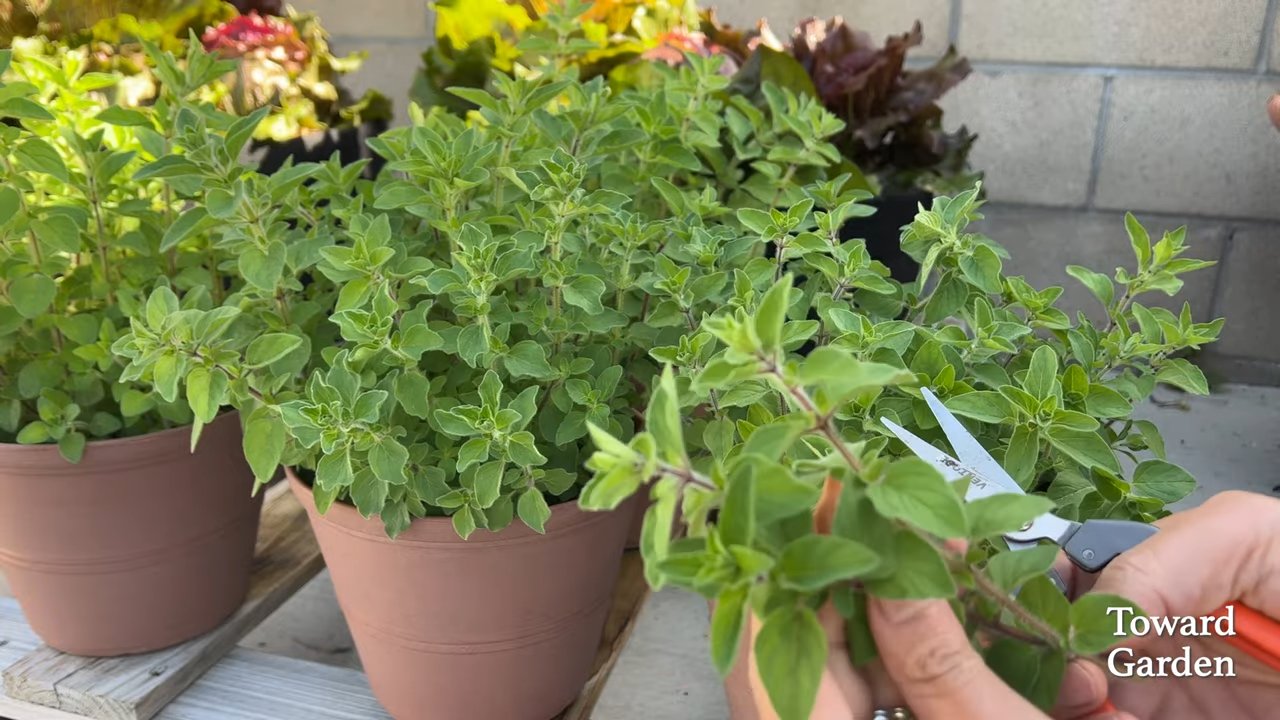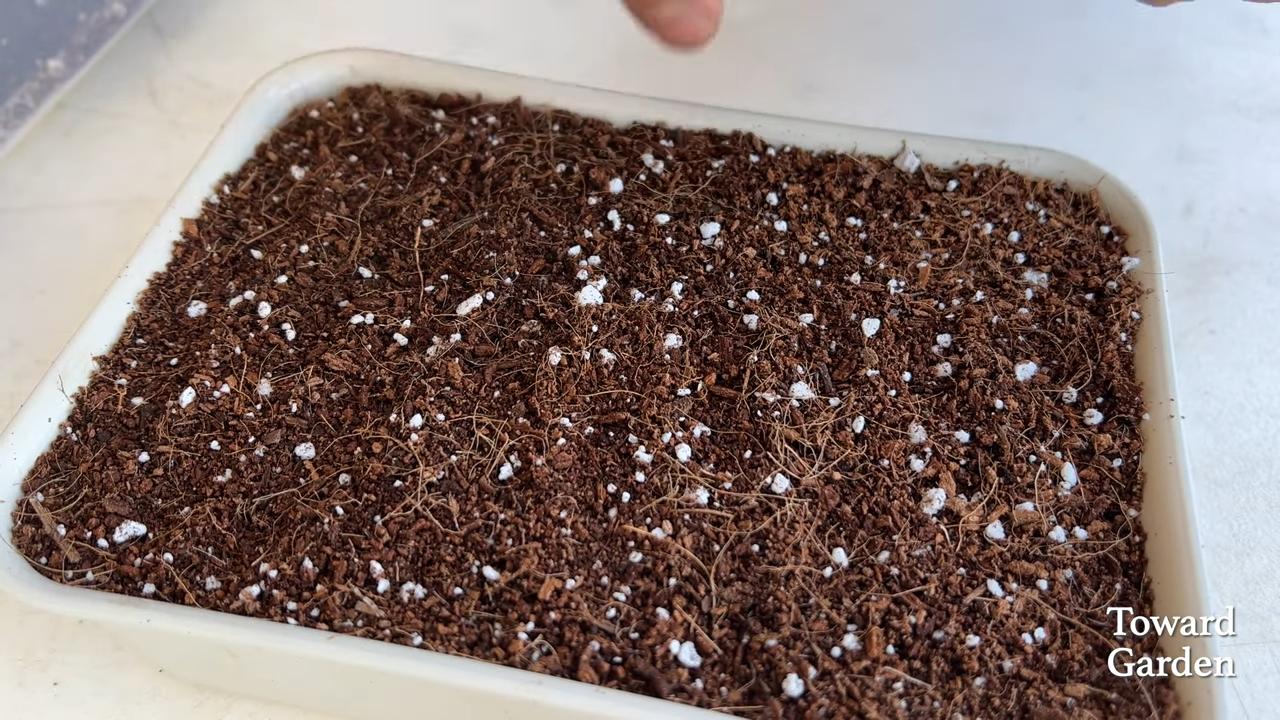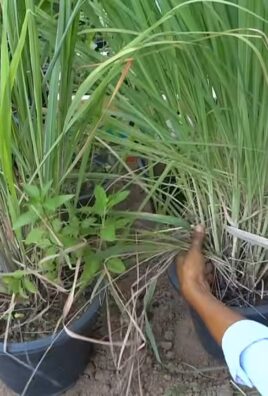Growing oregano at home doesn’t have to be a culinary dream confined to sprawling gardens! Imagine stepping outside your door and snipping fresh, fragrant oregano to elevate your pasta sauce, season your grilled chicken, or brew a soothing herbal tea. Sounds idyllic, right? Well, it’s absolutely achievable, even if you’re short on space or gardening experience.
Oregano, with its rich history stretching back to ancient Greece and Rome, wasn’t just a flavour enhancer; it was revered for its medicinal properties and symbolic associations with joy and happiness. Today, we still cherish this herb, but often rely on dried versions from the supermarket. But why settle for that when you can have the vibrant, potent flavour of homegrown oregano at your fingertips?
This DIY guide is your passport to unlocking the secrets of successfully growing oregano at home. I’ll share simple, effective tricks and hacks that will transform even the most novice gardener into an oregano-growing pro. From choosing the right container to mastering the art of propagation, I’ll cover everything you need to know. Forget expensive store-bought herbs that lose their flavour quickly. With these easy tips, you’ll have a constant supply of fresh, delicious oregano, ready to add a touch of Mediterranean magic to your meals. Let’s get started!

Growing Oregano at Home: Your Comprehensive DIY Guide
Hello, dear garden friends! Oregano is not only a fantastic herb for the kitchen but also super easy to grow at home. Whether you have a large garden, a small balcony, or just a sunny windowsill, you are guaranteed to succeed with this guide. I’ll show you how to successfully plant, care for, and harvest oregano. Let’s get started!
What You’ll Need: The Materials List
Before we get started, make sure you have everything on hand. Here is a list of the things you will need:
- Oregano seeds or oregano seedlings: You can find seeds online, at a garden center, or even in some supermarkets. Seedlings are a bit more expensive, but they give you a head start.
- Seed-starting mix or high-quality potting soil: Oregano likes well-draining soil.
- Pots or planter boxes: Choose the size depending on whether you want to grow indoors or outdoors.
- Watering can or spray bottle: For watering.
- Garden shears or sharp scissors: For harvesting.
- Optional: Fertilizer (organic or mineral), seed trays, mini-greenhouse (for starting seeds).
- Optional: Mulch (e.g., wood chips or straw) for moisture retention outdoors.
Growing Oregano: A Step-by-Step Guide
Here is a detailed guide on how to successfully grow oregano. I have divided the process into different phases to make it clearer.
Phase 1: Sowing (or Planting Seedlings)
1. Sowing Seeds (if you’re starting with seeds):
- Fill seed trays or small pots with seed-starting mix.
- Lightly moisten the soil. It should be damp, but not wet.
- Sprinkle the oregano seeds thinly on the surface of the soil. Oregano is a light germinator, which means the seeds need light to sprout. So, cover them only very lightly with soil or just press them in gently.
- Gently spray the surface with water to avoid washing the seeds away.
- Cover the seed trays or pots with a clear plastic film or a mini-greenhouse to increase humidity.
- Place the seed trays in a warm, bright place (e.g., a sunny windowsill).
- Keep the soil moist, but not wet. Ventilate the cover daily to prevent mold.
- Germination usually takes 10-14 days.
2. Planting Seedlings (if you’re starting with seedlings):
- Choose a pot or planter box with enough space for the roots.
- Fill the pot with high-quality potting soil.
- Dig a small hole large enough to accommodate the seedling’s root ball.
- Carefully remove the seedling from its original container and gently loosen the roots.
- Place the seedling in the hole and fill it with soil. Press the soil down lightly.
- Water the seedling thoroughly.
Phase 2: Care
- Location: Oregano loves the sun! Place your pots or planter boxes in a sunny location that receives at least 6 hours of sunlight per day. If you are growing oregano indoors, place it on a sunny windowsill or use a grow light.
- Watering: Oregano does not like its feet to be wet. Only water it when the top layer of soil is dry. Avoid waterlogging, as this can lead to root rot. You may need to water more frequently in the summer than in the winter.
- Fertilizing: Oregano is not very demanding when it comes to fertilizing. However, you can occasionally feed it with an organic or mineral fertilizer to promote growth. Use a fertilizer that is rich in nitrogen, phosphorus, and potassium. Follow the instructions on the fertilizer’s packaging. I fertilize my oregano plants about every 4-6 weeks during the growing season (spring and summer).
- Pruning: Regular pruning promotes growth and prevents the plant from becoming too long and leggy. Trim the shoot tips regularly to encourage branching. You can use the cut shoots for cooking or dry them for later use.
- Overwintering (if you live in a cold region): Oregano is hardy, but in very cold regions, it can be a good idea to bring the plants indoors for the winter or protect them with mulch. If you are growing oregano in pots, you can simply bring the pots inside. If you are growing oregano in the garden, you can cover it with a thick layer of mulch (e.g., straw or leaves) to protect the roots from frost.
Phase 3: The Harvest
- When to harvest: You can harvest oregano as soon as the plant is large enough. It is best to harvest oregano in the morning after the dew has dried. This is when the essential oils are most concentrated and the aroma is most intense.
- How to harvest: Use garden shears or sharp scissors to cut the shoots. Cut the shoots just above a leaf node to promote the growth of new shoots. You can use the leaves fresh or dry them for later use.
- Drying: To dry oregano, bundle the cut shoots and hang them in a dry, dark, and well-ventilated place. You can also spread the shoots on a baking sheet and dry them in the oven at a low temperature (approx. 40-50°C / 100-120°F). The leaves are dry when they crumble easily. Store the dried leaves in an airtight container in a dark and cool place.
Common Problems and Solutions
Even when growing oregano, problems can occur. Here are some common problems and how you can solve them:
- Yellow leaves: Yellow leaves can be a sign of overwatering, a nutrient deficiency, or a pest infestation. Check your watering and fertilize the plant if necessary. Examine the leaves for pests.
- Pests: Oregano can be infested by aphids, spider mites, or whiteflies. Spray the plant with an insecticide or a mixture of water and dish soap.
- Root rot: Root rot is caused by waterlogging. Make sure the soil is well-draining and avoid overwatering.
- Fungal diseases: Fungal diseases can occur if the humidity is too high. Ensure good ventilation and avoid wetting the leaves when watering.
Oregano in the Kitchen
Oregano is a versatile herb that can be used in many different dishes. It pairs excellently with pizza, pasta, salads, soups, sauces, and meat dishes. You can use oregano fresh or dried. Fresh oregano has a more intense aroma than dried oregano.

Conclusion
So, there you have it! Growing oregano at home isn’t just a fun project; it’s a gateway to fresher, more flavorful meals and a more sustainable lifestyle. Forget those sad, dried-out jars of oregano from the supermarket. Imagine the vibrant aroma of freshly snipped oregano leaves filling your kitchen, ready to elevate your pasta sauces, pizzas, grilled meats, and so much more.
This DIY trick is a must-try for several compelling reasons. First and foremost, the taste difference is undeniable. Fresh oregano boasts a brighter, more complex flavor profile than its dried counterpart, adding a depth of herbaceousness that will truly transform your cooking. Secondly, it’s incredibly cost-effective. A single packet of oregano seeds or a small starter plant can provide you with a continuous supply of this versatile herb for months, even years, to come. Think of all the money you’ll save on those expensive spice jars!
Beyond the culinary benefits, growing your own oregano is also a rewarding experience. There’s something deeply satisfying about nurturing a plant from seed to harvest, knowing that you’re contributing to a more sustainable food system. Plus, oregano is a relatively low-maintenance herb, making it perfect for beginner gardeners.
Don’t be afraid to experiment with different varieties of oregano. Greek oregano is known for its strong, pungent flavor, while Italian oregano offers a milder, sweeter taste. Mexican oregano, though botanically different, provides a citrusy, almost peppery kick that’s perfect for Southwestern cuisine. You can even try growing variegated oregano for a touch of visual interest in your garden or windowsill.
Consider these variations to tailor your oregano-growing experience:
* Container Gardening: If you’re short on space, oregano thrives in pots and containers. Choose a well-draining potting mix and a sunny location.
* Hydroponics: For a more modern approach, try growing oregano hydroponically. This method allows you to control the nutrient levels and growing conditions, resulting in faster growth and higher yields.
* Companion Planting: Oregano is a great companion plant for many vegetables, including tomatoes, peppers, and eggplant. It helps to repel pests and attract beneficial insects.
* Drying Your Harvest: When you have an abundant harvest, dry your oregano leaves to preserve them for later use. Simply hang the stems upside down in a cool, dry place or use a dehydrator.
We wholeheartedly encourage you to give this DIY trick a try. It’s a simple, affordable, and rewarding way to enhance your cooking and connect with nature. Once you’ve experienced the joy of growing your own oregano, you’ll never go back to store-bought again.
And most importantly, we want to hear about your experience! Share your tips, tricks, and photos with us in the comments below. Let us know what varieties of oregano you’re growing, what dishes you’re using it in, and any challenges you’ve encountered along the way. Together, we can create a community of oregano enthusiasts and inspire others to embrace the joys of home gardening. So, grab your seeds, get your hands dirty, and start growing your own delicious oregano today!
Frequently Asked Questions (FAQ)
What kind of soil is best for growing oregano?
Oregano thrives in well-draining soil. A mix of potting soil, perlite, and vermiculite is ideal for container gardening. If planting in the ground, amend heavy clay soil with compost or other organic matter to improve drainage. The ideal pH level for oregano is between 6.5 and 7.0.
How much sunlight does oregano need?
Oregano needs at least six hours of sunlight per day to thrive. Choose a sunny location in your garden or place your container on a sunny windowsill. If you live in a hot climate, provide some afternoon shade to prevent the leaves from scorching.
How often should I water my oregano plant?
Water oregano when the top inch of soil feels dry to the touch. Avoid overwatering, as this can lead to root rot. Oregano prefers slightly dry conditions. During hot, dry weather, you may need to water more frequently.
How do I harvest oregano?
You can start harvesting oregano leaves as soon as the plant is established, usually about 6-8 weeks after planting. Simply snip off the stems with scissors or pruning shears, leaving at least a few inches of growth on the plant. Regular harvesting encourages bushier growth. The best time to harvest oregano is in the morning, after the dew has dried but before the sun gets too hot.
How do I dry oregano?
There are several ways to dry oregano. One method is to tie the stems together and hang them upside down in a cool, dry, well-ventilated place. Another method is to spread the leaves on a screen or baking sheet and let them air dry. You can also use a dehydrator to dry oregano leaves. Once the leaves are completely dry, store them in an airtight container in a cool, dark place.
Can I grow oregano indoors?
Yes, oregano can be grown indoors, provided it receives enough sunlight. Place the plant on a sunny windowsill or under a grow light. Use a well-draining potting mix and water regularly, allowing the soil to dry out slightly between waterings.
Is oregano a perennial or an annual?
Oregano is a perennial herb in most climates, meaning it will come back year after year. In colder climates, it may be grown as an annual. To protect oregano plants from frost, mulch around the base of the plant in the fall.
How do I propagate oregano?
Oregano can be propagated from seeds, cuttings, or division. To propagate from seeds, sow the seeds indoors 6-8 weeks before the last frost. To propagate from cuttings, take 4-6 inch cuttings from healthy stems and root them in water or potting mix. To propagate by division, carefully dig up the plant and divide the root ball into smaller sections.
What are some common pests and diseases that affect oregano?
Oregano is generally pest-resistant, but it can be susceptible to aphids, spider mites, and whiteflies. These pests can be controlled with insecticidal soap or neem oil. Oregano can also be affected by fungal diseases, such as root rot and powdery mildew. To prevent these diseases, avoid overwatering and provide good air circulation.
Can I use oregano in cooking?
Absolutely! Oregano is a versatile herb that can be used in a wide variety of dishes. It’s a staple ingredient in Italian, Greek, and Mexican cuisine. Use fresh or dried oregano to flavor pasta sauces, pizzas, soups, stews, grilled meats, and vegetables.
Does oregano have any health benefits?
Yes, oregano is rich in antioxidants and has anti-inflammatory and antimicrobial properties. It has been used traditionally to treat a variety of ailments, including coughs, colds, and digestive problems. While more research is needed, some studies suggest that oregano may have potential health benefits.
How do I encourage my oregano plant to be bushier?
Regularly pruning or pinching back the stems of your oregano plant will encourage it to grow bushier. This also prevents the plant from becoming leggy and overgrown. Pinch off the tips of the stems just above a leaf node.
What is the difference between Greek oregano and Italian oregano?
Greek oregano ( *Origanum vulgare* subsp. *hirtum*) has a stronger, more pungent flavor than Italian oregano ( *Origanum x majoricum*). Greek oregano is often used in Mediterranean cuisine, while Italian oregano is more commonly used in Italian dishes.
My oregano plant is flowering. Should I remove the flowers?
While oregano flowers are edible and attract pollinators, some gardeners prefer to remove them to encourage more leaf production. Removing the flowers will prevent the plant from putting its energy into seed production and instead focus on growing more leaves.




Leave a Comment